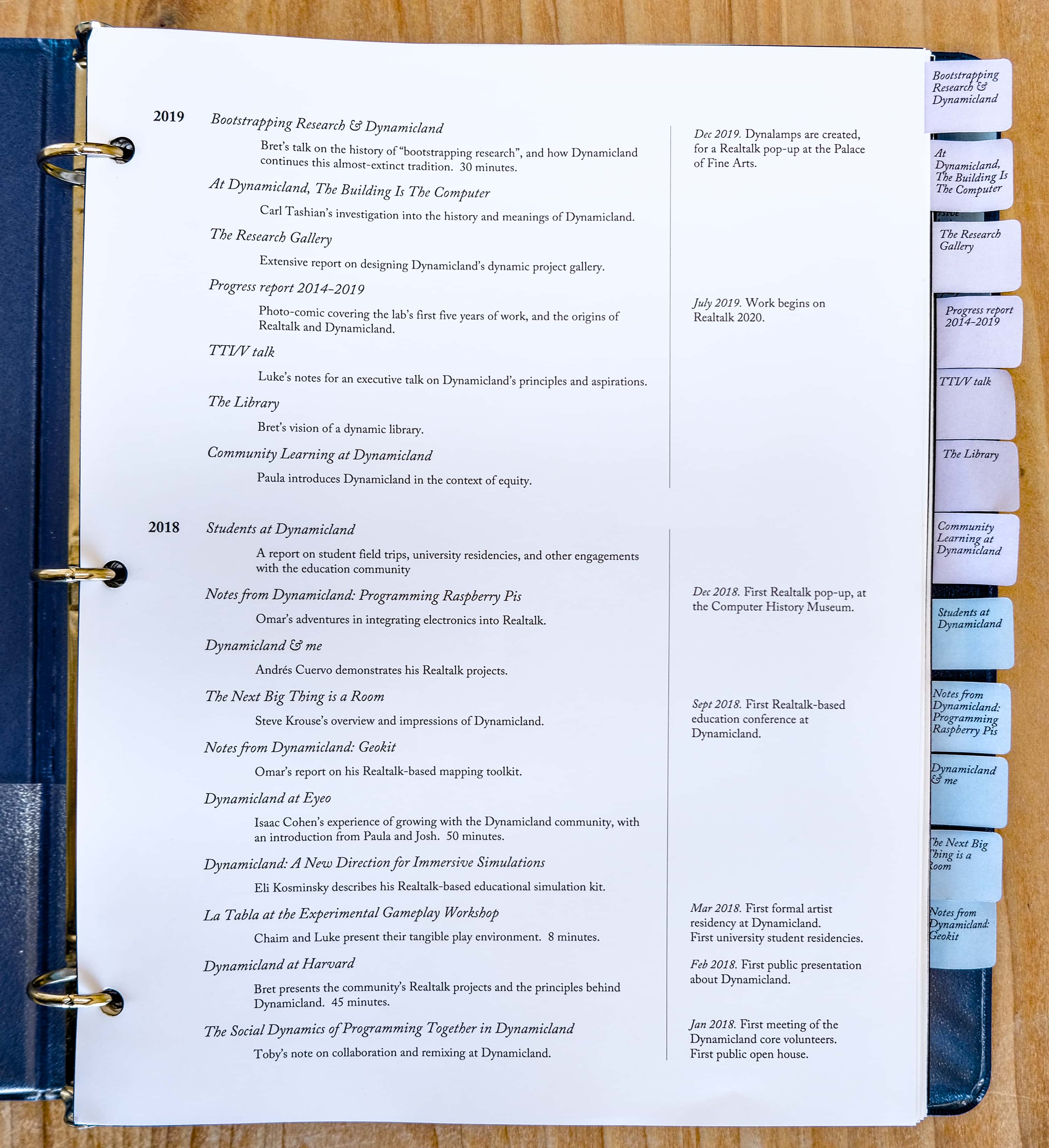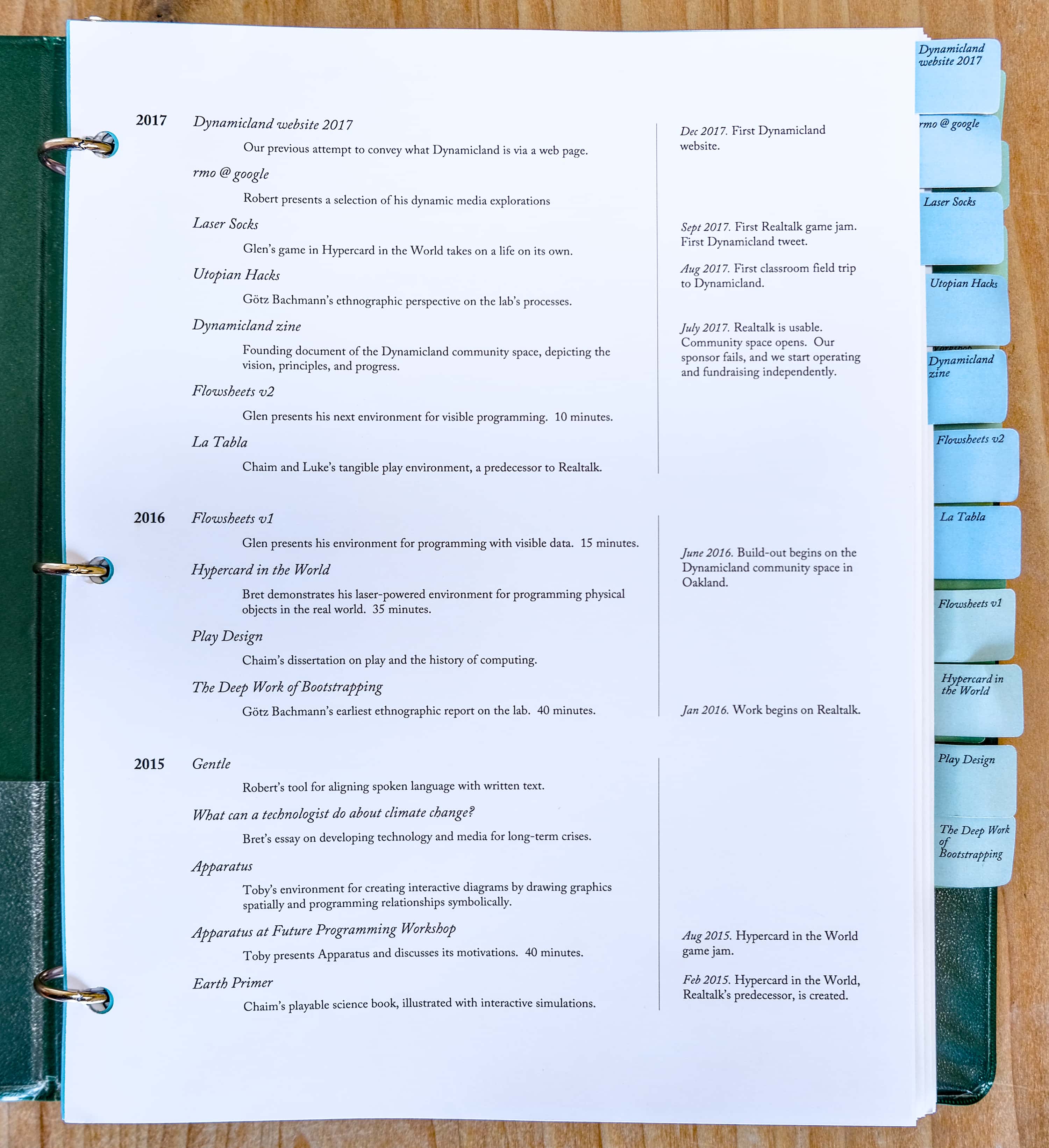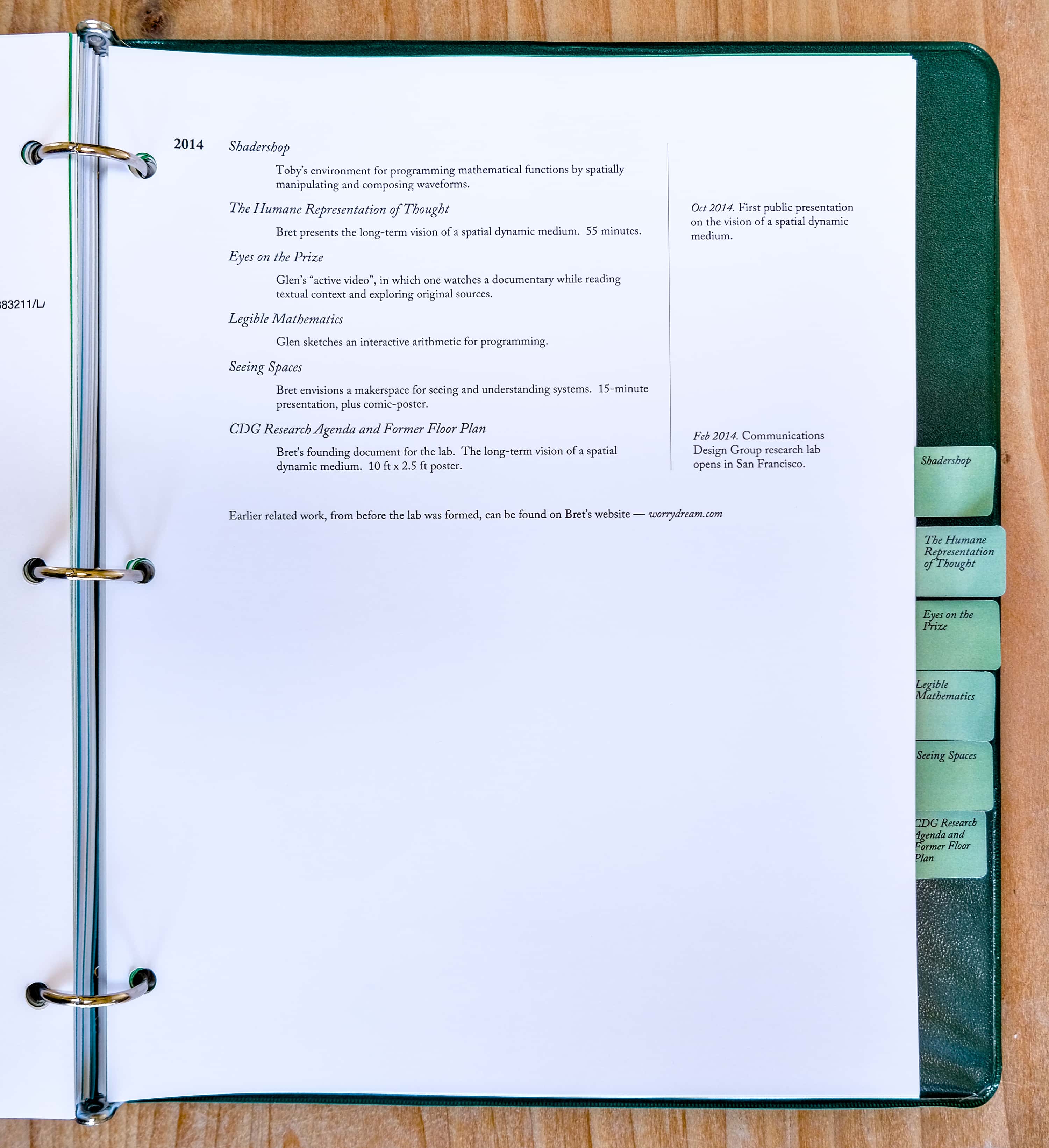Dynamicland presentations, reports, articles, &c
Computational Public Space: Bret presents a values-driven approach to integrating computation into cities. 40 minutes.
Dynamicland website 2024: Online real-world collection of the lab’s decade of work, with a cross-referenced archive of all projects.
The communal science lab: Founding document for a Realtalk-based science lab, in collaboration with Shawn Douglas, depicting the vision of communal science.
Improvising cellular playgrounds in Realtalk: The first scientific presentation using Realtalk as the medium. 15 minute summary + 1 hour presentation.
Progress report 2022: Photo-comic of our work in 2022, with reflections on what’s been accomplished and what’s still needed.
Radical Decentralization, Radical Empowerment, and Dynamicland: A Dynamicland perspective on the decentralized web.
Biomolecular design in Realtalk: Video demonstration of Realtalk in the science lab, showing nanostructure design, wet lab work, and data analysis. 10 minutes.
Progress report 2021: Handwritten letter to the community, describing progress through the pandemic and future plans.
gentle, a personal history: Robert reflects on the creation and future of his transcript alignment tool.
Dynamicland Foundation narrative of activities: Dynamicland’s mission and philosophy as an educational institution, written for our nonprofit application.
Progress report 2020: Informal video tour of the lab, demonstrating early progress on Realtalk 2020, with an emphasis on extreme visibility. 20 minutes.



